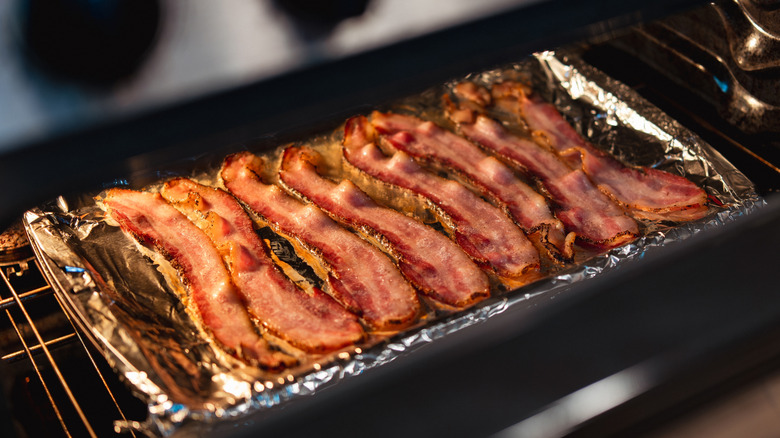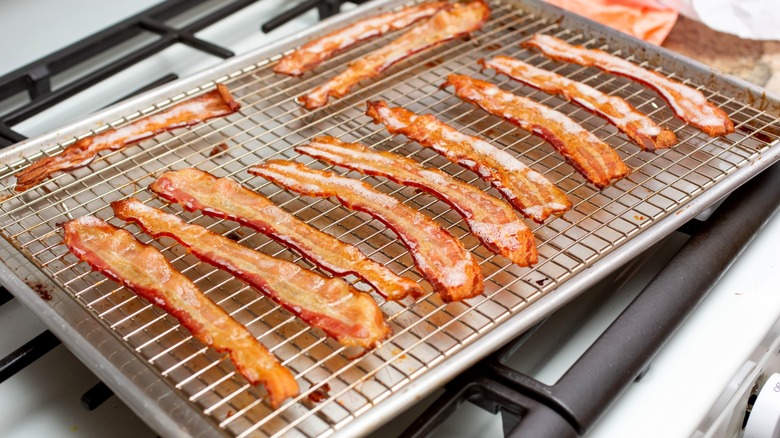
Poggensee/Shutterstock
Baking your bacon is hands down the best (and easiest) way to cook it. People have obsessed over getting these beautiful strips of cured pork cooked to perfection, and popping them into an oven routinely comes up with the best results. It’s so effective, we’ve developed all sorts of techniques for cooking bacon in an oven just so we get it right every time. As it turns out, however, there’s one more thing we should be doing: going in cold.
In an exclusive conversation with Chowhound, chef Michelle Wallace — renowned pitmaster, TV personality, and owner and founder of B’tween Sandwich Co. (@btweensandwichco on Instagram) — shared that the best tip for baking bacon is simply to skip pre-heating your oven. Besides being more convenient and saving you time, it’s the secret to perfectly cooked strips. “Starting the bacon in a cold oven allows time for the fat to render gradually as the oven heats up to temp,” she explained. “This creates an even cook and crisp to the bacon.”
The main reason this works lies in bacon’s composition. Bacon fat begins to render at around 140 to 160 degrees Fahrenheit, but the meat starts to crisp up at around 400 to 425 degrees Fahrenheit. If you toss a bacon strip into a hot oven, these two elements will cook at different rates, with the lean parts cooking faster than the fat can render out. Since bacon is roughly 45% to 55% fat, this causes the bacon to curl as the meat shrinks, which in turn makes it cook even more unevenly. By starting with a cold oven, you allow the fat more time to render properly, giving you uniformly crispy, flat strips of bacon.
Other tips for getting the bacon texture you want

The Image Party/Shutterstock
For maximum crispness, chef Michelle Wallace recommended literally elevating your bacon with a common kitchen tool. “To ensure that crisp bacon, make sure that you have the bacon arranged in a single layer and on top of a wire rack that’s on top of a sheet pan. This will allow for the fat to render slowly and drip down to the pan,” she said. By draining the rendered fat away from the bacon, you keep your strips of salty goodness away from any excess moisture that might compromise its crunch. You can also try coating your bacon in flour, a common pantry staple, to crisp it up even further.
Of course, not everyone is a fan of crispness; some of us prefer a chewier strip of bacon. For that, Wallace suggested getting rid of the wire rack and laying out the bacon in a single layer, straight onto the pan, which keeps the bacon in contact with the rendered fat. You can also set your oven to a lower temperature — somewhere between 375 and 400 degrees Fahrenheit is a good spot — and cook for a shorter time. The actual cook time will depend on how thick your bacon is, so some trial and error is recommended until you get the exact texture you want. From there, all that’s left to do is to enjoy your perfectly cooked bacon, whether on its own or made to fit into your favorite sandwich.


Dining and Cooking